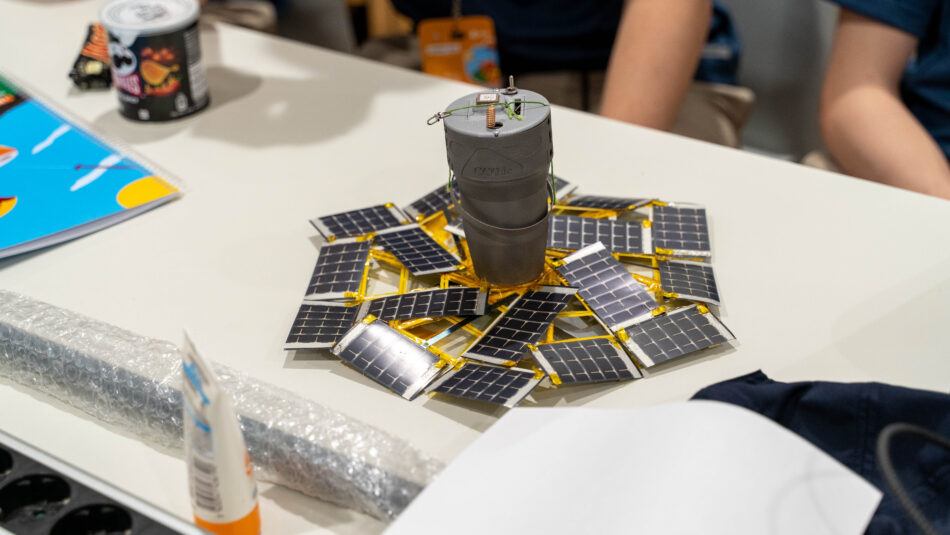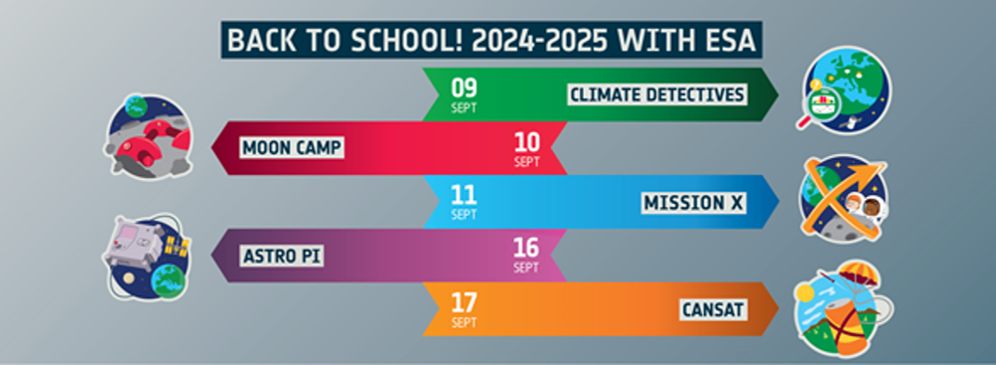
Objects in orbit: the problem of space debris
A waste of space: years of human activity in space have left thousands of objects in orbit around the Earth. Learn more about the risks they pose and what we can do about it.

Discover five exciting projects from ESA and its ESERO network. Use space to motivate and enrich your lessons for out-of-this world STEM lessons!
With a new school year already started, it’s time to choose which projects to carry out with your students. Discover exciting school projects and unique teacher training opportunities at the national and international level offered by ESA and its European Space Education Resource Office (ESERO) network.

ESA/ESERO offer five exciting interdisciplinary space-related school projects focusing on different knowledge, competences, and skills.[1] The projects are targeted to different age groups and are designed to allow a high degree of flexibility. Participation is free and, in some cases, students can participate in international events. Through these projects, students can expand their knowledge of curricular STEM subjects and develop new skills and competences.
Age: up to 19 years old
Kick-off: 9 September
Satellites are instrumental in monitoring our planet, to understand it, but also to contribute to more sustainable development and to help mitigate effects of climate change. Use real satellite images and other Earth observation data to investigate a local climate or environmental problem. Climate Detectives investigations can focus on climate change but also the environment, sustainable ways of living, biodiversity, air quality, forests, oceans, and much more!
For the younger students, up to 12 years old, there is a dedicated category called Climate Detectives Kids, where teams complete activities related to earth sciences and collect badges to receive a final certificate.

Stimulate curiosity, teamwork, and understanding of the scientific method. Together, student Climate Detectives work to understand and take care of our planet, while gaining the skills they need to face 21st century challenges.
Participants will be invited to an inspiring and motivational online event in the winter, and selected national teams will be welcomed by ESA at its ESRIN site on 12–13 May 2025 for a learning and celebration event.
Age: up to 19 years old
Kick-off: 10 September
Take on a new space adventurer role with your team and design a habitat on the lunar surface or go beyond the Moon and explore other worlds in our Solar System.
The project can be a scientific experiment, a hands-on project, a design for space infrastructures, a 3D design for an astronaut base, a 3D printing model, a virtual or augmented reality world, and much more. Select the topic and format that best fits the team and get creative!

All teams will be invited to an inspiring and motivational online event in winter, and teams that submit a project will receive a participation certificate and an invite to participate in an online event with an ESA astronaut and space experts. More details will be announced in September; until then, find inspiration in the winning projects from 2023–2024 on the Moon Camp Challenge.
Moon Camp is a partnership between ESA with its ESERO network and the Airbus Foundation.
Age: up to 14 years old
Kick-off: 11 September
Astronauts need to be fit and healthy to be able to perform their mission well. It’s time to get up, move your body, and train like an astronaut! In Mission X, students learn the key elements to keeping fit and staying healthy in space and on Earth. They can then complete physical exercises and scientific activities to earn virtual steps with the aim of reaching the Moon!
New this school year: a virtual celebration event will be held for participating teams once Leo and Luna reach the Moon!

Age: up to 19 years old
Kick-off (Mission Zero): 16 September
Kick-off (Mission Space Lab): 16 September
Have you ever dreamed of creating a code that could run in space? It’s easier than you think! All you need is to write a computer program for special Raspberry Pi computers, called Astro Pis, which are located on the International Space Station (ISS). In Mission Zero, which is for beginners, students can collect colour and luminosity measurements and create their own pixel art image for the astronauts. For the more advanced Mission Space Lab, there’s an exciting challenge: to write a computer program to measure the speed that the International Space Station (ISS) is travelling as accurately as possible.
Astro Pi is run by ESA, with its ESERO network, in collaboration with the Raspberry Pi Foundation.

Age: 14–19 years old
Kick-off: 17 September
CanSat challenges students to fit the key components of a satellite into the volume of a soda can. What’s it like to make a real space project from A to Z? Work in teams to design, build, launch, and operate a CanSat to find out!
National competitions are run annually by each ESERO and other national partners. The national CanSat winning teams are welcomed by ESA at its ESTEC site on 17 and 18 June 2025 for a learning and celebration event: Space Engineer for a Day.


[1] Find more information in ESA’s Teacher Corner: https://www.esa.int/Education/Teachers_Corner/Save_the_Date_Back_to_School_2024-2025_with_ESA

A waste of space: years of human activity in space have left thousands of objects in orbit around the Earth. Learn more about the risks they pose and what we can do about it.

Investigate the factors affecting plant growth and devise a plan for growing plants on the…

What would the world look like if we could see infrared light? With some simple modifications, you can turn a cheap webcam into an infrared camera…